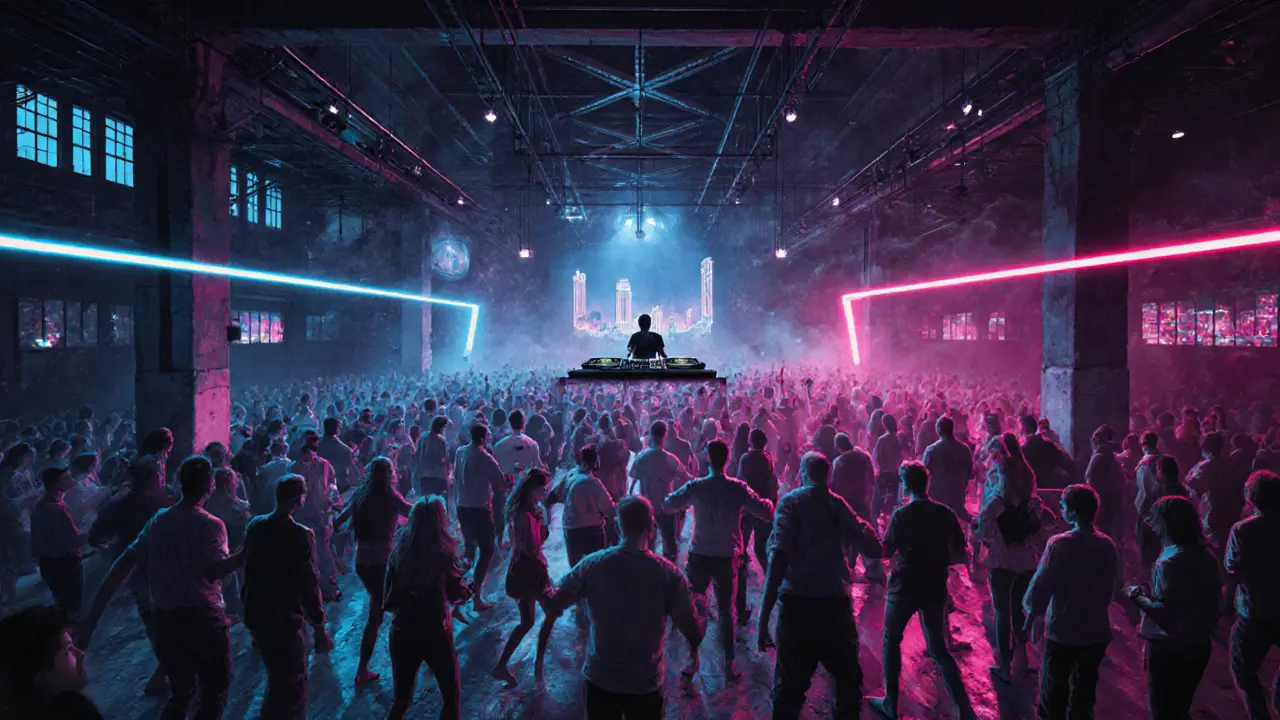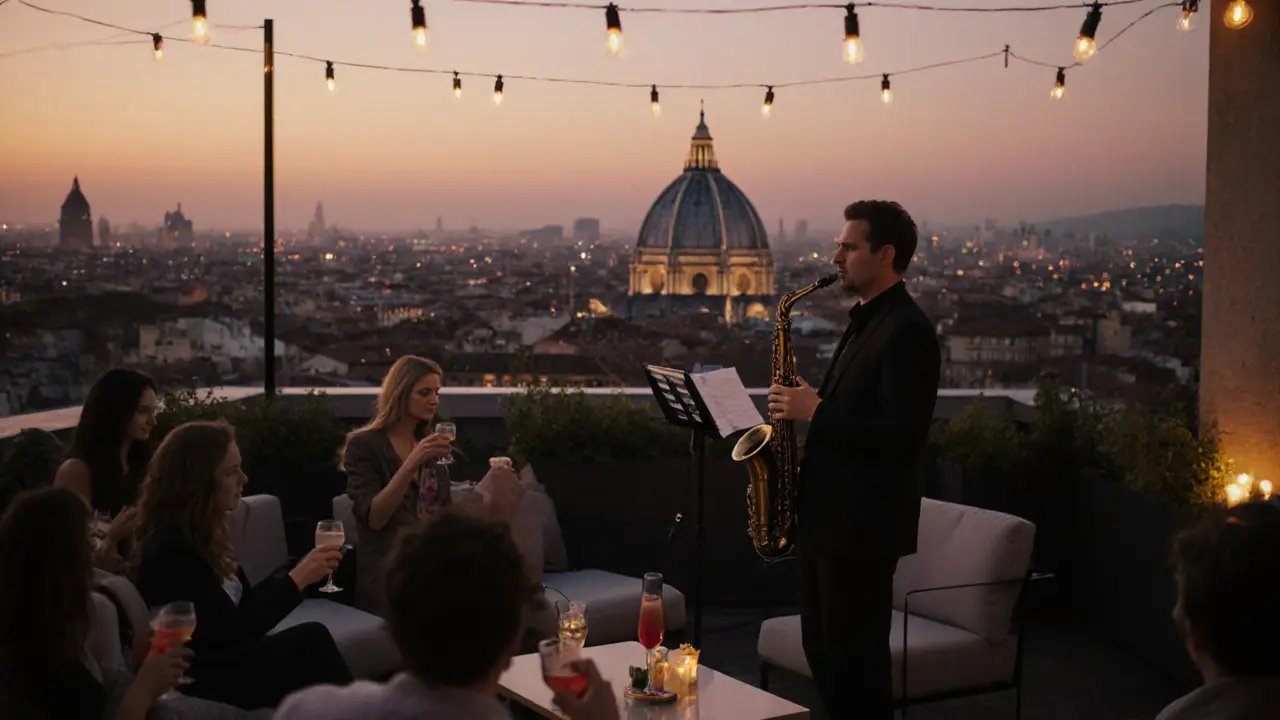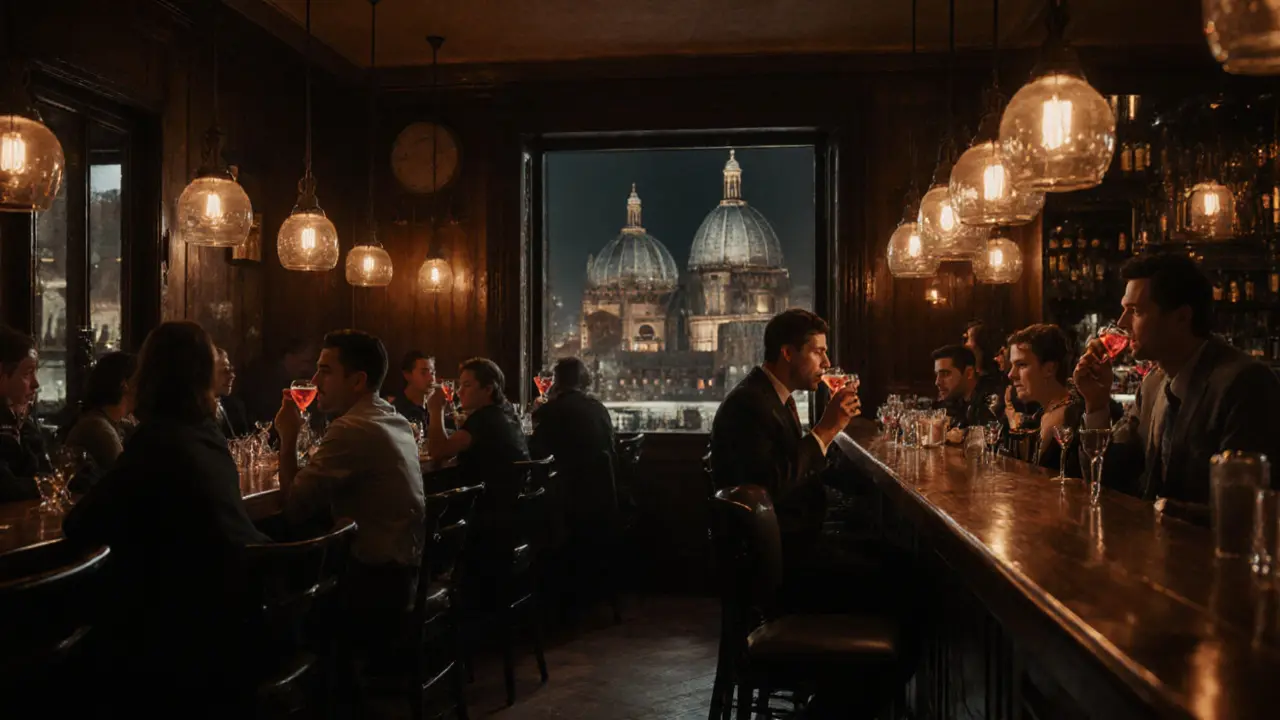When the sun sets in Milan, the city doesn’t sleep-it switches modes.
Most tourists think of Milan as fashion runways and designer boutiques. But after 10 p.m., the real Milan wakes up. This isn’t just a city with bars-it’s a place where underground techno rooms bump next to velvet-lined jazz lounges, and rooftop terraces overlook lit-up Duomo spires while DJs spin house tracks under the stars. If you want to know where locals actually go, what time to show up, and how to avoid the tourist traps, this guide cuts through the noise.
Where the locals go-beyond the tourist zones
Forget Navigli if you’re looking for authentic Milanese nightlife. Yes, it’s pretty with its colorful buildings and canal-side tables, but by 11 p.m., it’s packed with groups taking selfies and paying €18 for a gin and tonic. The real action starts in Brera, Isola, and the area around Porta Venezia.
In Brera, Bar Basso is the quiet king. Open since 1953, it’s where Milanese professionals unwind after work. Order a Negroni Sbagliato-the drink they invented here-and sit at the bar. No music, no flash, just perfect cocktails and old-school charm. It’s not a party spot, but it’s where you’ll find the city’s most stylish people, quietly enjoying the night.
Head to Isola, the former industrial zone turned creative hub. Here, La Cucina turns into a dance floor after midnight. The playlist shifts from indie rock to deep house, and the crowd? Mostly locals in black turtlenecks and vintage denim. Entry is free until midnight. The vibe is less “club,” more “cool friends’ basement.”
Best clubs for real music, not just loud bass
Milan’s club scene is split between underground spots and big-name venues. If you care about the music, skip the places with velvet ropes and bouncers checking your designer bag.
- Teatro degli Orrori in the Porta Venezia area is a converted theater that hosts experimental electronic acts. No VIP tables. No dress code. Just a crowd of art students, DJs, and curious outsiders dancing on wooden floors under flickering neon lights.
- Magazzini Generali is the city’s most respected techno institution. Located in a 19th-century warehouse, it books names like Ricardo Villalobos and Amelie Lens. Doors open at 1 a.m. and stay open until 7 a.m. Cash only. No phones on the dance floor-yes, they check.
- La Scala Club isn’t attached to the opera house. It’s a hidden basement bar under a bookstore in Brera. Live jazz on Thursdays, vinyl-only sets on weekends. You won’t find it on Google Maps unless you know the alley.
Rooftop bars with views that beat the clubs
Some nights, you don’t want to dance-you want to sip something cold while the city glows below you.
Terrazza Aperol at the Palazzo delle Scintille is the most Instagrammed spot, but it’s worth it. The view of the Duomo at golden hour is unmatched. Order the Aperol Spritz (it’s made with real Aperol, not syrup) and watch the city lights turn on. It gets packed, so go before 8 p.m.
For something quieter, try Roof Garden 360 at the NH Collection Milano. It’s on the 18th floor, has a live saxophonist on Fridays, and the cocktails are priced like a local bar-€12 max. No bouncers, no pretense. Just good drinks and a 360-degree view of Milan’s skyline.

When to go-and how to avoid getting scammed
Milan’s nightlife runs on a different clock. Most places don’t even start filling up until after midnight. Show up at 10 p.m., and you’ll be the only one there. Show up at 2 a.m., and you’ll be fighting for space.
Here’s the real timing:
- 7-9 p.m.: Aperitivo hour. Bars serve free snacks with drinks (€10-15). This is where Milanese socialize. Go early, grab a seat, and mingle.
- 10-11 p.m.: Transition time. Bars fill up. Clubs open. Head to your next spot.
- 1 a.m.-3 a.m.: Peak hours. This is when the real clubs come alive. Teatro degli Orrori, Magazzini Generali, and smaller spots like Bar Luce (a David Lynch-designed bar inside the Fondazione Prada) are buzzing.
- 4 a.m.: The after-party. If you’re still standing, head to La Perla-a 24-hour diner near Porta Genova. It’s the only place open where you can get a coffee and a panino after the clubs close.
Watch out for fake clubs. Some places in the city center advertise “Milan’s #1 Club” with big signs and online ads. They’re often overpriced, poorly stocked, and full of tourists. Check Instagram for recent photos from the last week. If the crowd looks like a cruise ship party, walk away.
What to wear-no suit required
Milanese nightlife has a dress code, but it’s not about luxury. It’s about effort. You don’t need a tailored suit. You do need to look like you tried.
Men: Dark jeans, clean sneakers or loafers, a fitted shirt or turtleneck. No shorts. No flip-flops. No baseball caps indoors.
Women: Midi dresses, tailored trousers, or sleek jumpsuits. Heels aren’t mandatory, but flat shoes won’t get you past the door at Magazzini Generali. Think “elegant casual.”
Most places don’t have a strict dress code, but the bouncers notice. If you show up in sweatpants and a hoodie, you’ll be turned away-even if you’re famous. It’s not snobbery. It’s culture.
How to get around-skip the Uber
Milan’s metro runs until 1:30 a.m. on weekdays and 2:30 a.m. on weekends. After that, you’ll need a taxi or ride-share.
But here’s the trick: Uber is expensive and unreliable after midnight. Instead, use FreeNow (formerly MyTaxi). It’s local, cheaper, and drivers know the nightlife spots. Or, if you’re staying near the city center, walk. Most hotspots are within a 15-minute walk of each other.
Don’t rent a scooter. The streets are narrow, the traffic is chaotic, and police are strict about helmet laws-even at 3 a.m.

What to drink-beyond the Aperol Spritz
Aperol Spritz is fine. But Milan has more to offer.
- Negroni Sbagliato-the city’s signature drink. It’s a Negroni with sparkling wine instead of gin. Served with an orange slice. Order it at Bar Basso.
- Campari Soda-simple, bitter, refreshing. A local’s go-to after work. Best at 7 p.m. on a terrace.
- Prosecco on tap-yes, it exists. Try it at Enoteca Pinchiorri in Brera. It’s cheaper than bottled, and the bubbles are fresher.
- Local craft beer-check out Birrificio Italiano in Isola. Their “Marengo” IPA is brewed with Milanese hops and tastes like citrus and pine.
What to do if you’re not into clubs
You don’t have to dance to have a great night in Milan.
Try a late-night cinema at Cinema Arlecchino in Brera. They show cult classics and foreign films with subtitles. Tickets are €8. Bring a friend, order wine, and sit in the back.
Or wander the empty streets of the Galleria Vittorio Emanuele II after 11 p.m. The marble floors echo under your feet. The lights are soft. It’s like walking through a museum that forgot to close.
For something odd and unforgettable, visit La Casa del Vino in Porta Romana. It’s a wine cellar turned speakeasy. You need a password. Get it from the bartender by ordering a glass of Barolo. The room is candlelit. The wine is poured from 1980s bottles. You won’t find it online. You have to be invited-or lucky.
Final tip: Be quiet, be respectful
Milanese nightlife isn’t about screaming or flashing cash. It’s about rhythm, taste, and knowing when to listen.
Don’t talk loudly on the street after midnight. Locals don’t. Don’t take photos inside clubs unless you’re asked. Don’t ask for “the party place” at a bar-just ask, “Where do you go after this?”
The best nights in Milan aren’t the loudest. They’re the ones where you end up in a back room with strangers who become friends over a shared bottle of wine and a song you didn’t know you loved.
What time do clubs in Milan open?
Most clubs in Milan don’t start filling up until after midnight. Doors typically open at 1 a.m., with peak hours between 2 a.m. and 4 a.m. Some places, like La Cucina, open earlier at 10 p.m. for drinks and music, but the real dance floor kicks in later.
Is Milan nightlife safe at night?
Yes, Milan’s nightlife areas are generally safe, especially in well-lit, popular districts like Brera, Isola, and Porta Venezia. Avoid walking alone in deserted side streets after 3 a.m., and always use licensed taxis or FreeNow instead of unmarked cars. Pickpockets are rare in clubs, but keep your phone and wallet secure in crowded spots.
Do I need to book tickets for clubs in Milan?
Most smaller clubs like Teatro degli Orrori or Bar Luce don’t require tickets-you just pay at the door. Big venues like Magazzini Generali sometimes sell tickets online for special events, especially if international DJs are playing. Check their Instagram or website the day before. For most nights, showing up is enough.
Can I use my credit card in Milan nightclubs?
Many places, especially underground clubs like Magazzini Generali, are cash-only. ATMs are nearby, but lines can be long after midnight. Carry €50-100 in cash for drinks, entry fees, and tips. Most rooftop bars and upscale lounges accept cards, but always have cash as backup.
What’s the best night to go out in Milan?
Friday and Saturday are the busiest, but Thursday nights are often the most fun. Many clubs host special events or live sets on Thursdays, and the crowds are smaller. Sunday nights are quiet, but places like La Perla stay open for late-night coffee and snacks if you’re still up.
